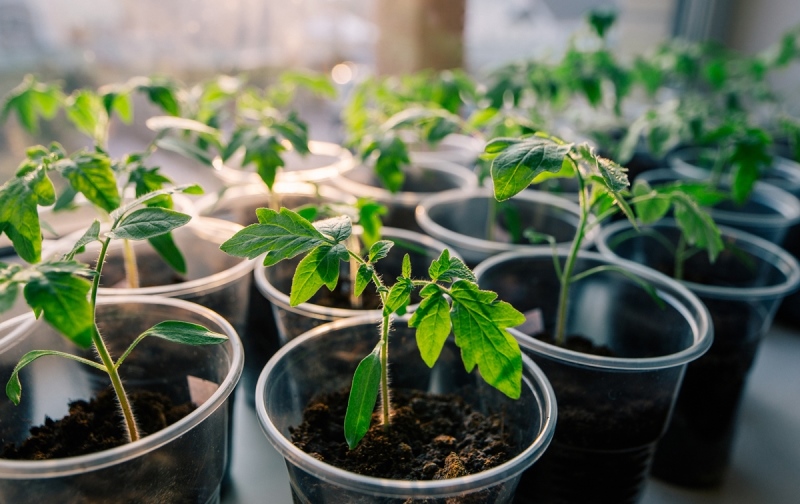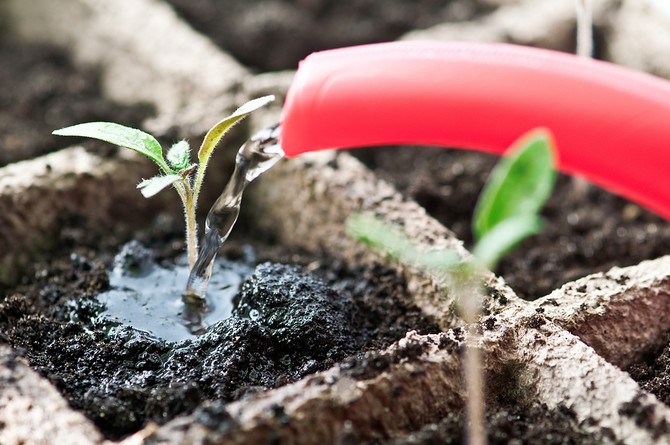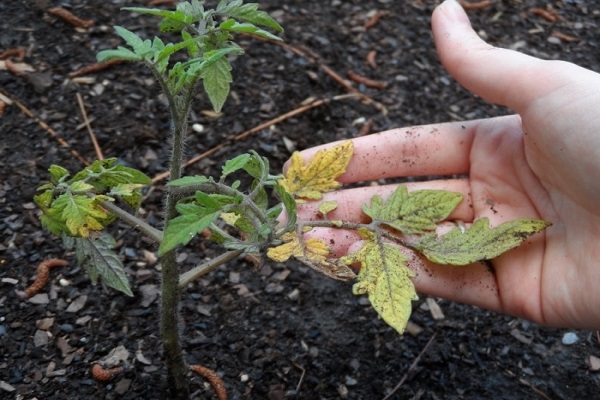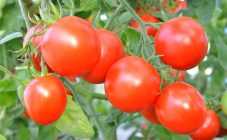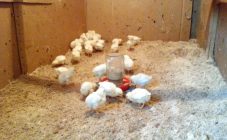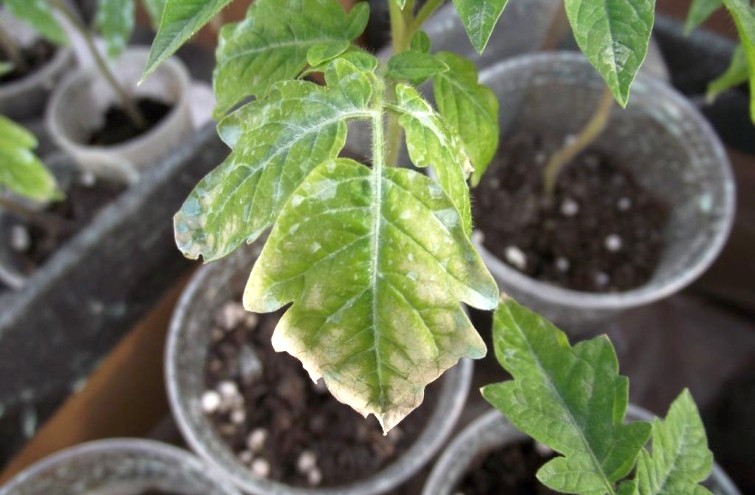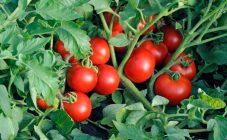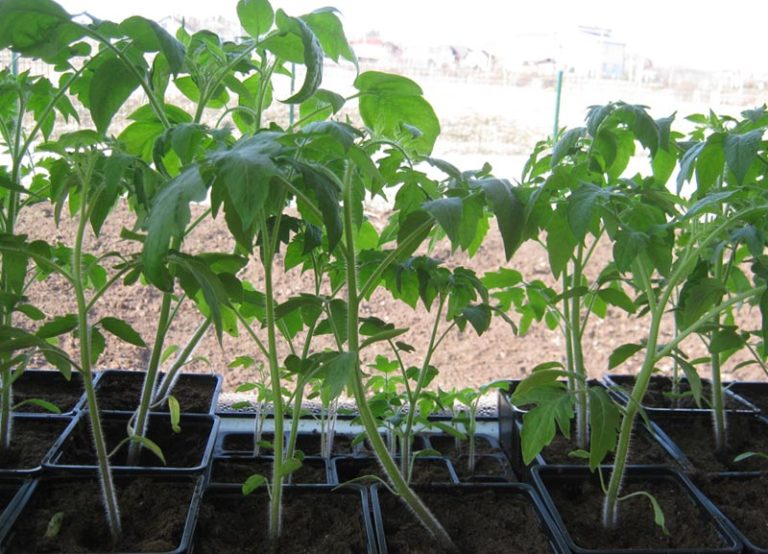Content:
When growing tomato seedlings, many gardeners have problems. This can be due to many reasons. Each of them must be dealt with separately.
Causes of poor growth of tomato seedlings
To fix the problem, you need to figure out why it occurred. There are many reasons why tomatoes do not grow after a pick.
- Watering the seedlings is not correct. If watering is carried out strictly according to the rules, it is recommended to check the condition of the drainage system. It is simply necessary so that excess liquid comes out of the container in which the seedlings grow. This will help maintain soil moisture at the required level.
- Incorrectly selected soil composition. Often, gardeners use soil directly from the garden to grow seedlings. Its acidity level may be too high or too low. This stops the growth of seedlings.
- A lot of fertilizers are applied to the soil. Plant growth can be adversely affected not only by the lack of nutrients, but also by their excess.
- Infection with fungal or infectious diseases also inhibits the growth of seedlings. Pest damage can not only stop the growth of seedlings, but also completely destroy them.
- If the pick is done incorrectly, the root system of the plant is damaged. Inexperienced gardeners may not properly compress the roots, resulting in air cushions.
- The plants are very densely planted. Planting of seedlings is recommended.
It is better to use peat pots as a container. They have the property of dissolving in the soil. Due to this, when transplanting seedlings, the plants can not be removed from the container without damaging the measles system.
At first glance, it may seem that there is nothing complicated in the dive process, but in fact the dive should be carried out in compliance with certain rules.
Priming
The composition of the soil has a direct impact on the growth and development of seedlings. To grow good seedlings, in no case should you use soil from the beds.
The soil must not only have the correct composition and structure, but also be disinfected. To do this, it is thoroughly watered with a weak solution of potassium permanganate. As a result, the development of pathogenic microorganisms and bacteria in the soil can be prevented. The presence of peat and special fertilizers in the soil will help to increase the level of its fertility.
If this is not taken care of in advance, seedlings will develop very slowly. But the situation can be corrected. For this, peat and the necessary fertilizers can be poured onto the topsoil in a container where plants grow. After a while, all nutrients will go to the root system.
Until the seedlings are ready for transplanting into open ground, it is recommended to feed them at least 4 times.
- For the first time, plants are fertilized immediately after germination. To do this, you can use a solution of nitrophoska and water. The plant is watered at the root until the soil gets wet.
- The seedlings are fed the second time after the flower clusters are formed. This can be done using ready-made tools that are sold in retail outlets.
- After the development of the third cluster of flowers, the plant also needs feeding.Gardeners recommend top dressing using Ideal fertilizer, which is mixed with nitrophosphate and water.
- The last feeding of the plants is done 2 weeks after the third. Superphosphate dissolves in water and is applied under the root of the plant.
If tomato seedlings are not growing, what to do? You can use the folk method: add chicken droppings dissolved in water under the root. Such watering is carried out for several days as needed.
Seedlings also respond well to feeding with crushed eggshells filled with warm water. The liquid is infused until it becomes cloudy. Under each bush of tomatoes, no more than a spoonful of the finished solution is applied.
Feeding with yeast is often used. To prepare the fertilizer, the yeast is dissolved in warm water with sugar. After a day, the solution is ready for use.
After the seedlings are planted in the beds, they can be watered with water in which the Athlete fertilizer is dissolved. As a result, the ground part of the plant will slightly slow down its growth and development, but the root system of tomatoes will grow quite actively.
Watering and growing place
At first glance, it may seem that there is nothing difficult in organizing watering of seedlings. This is actually a very important point. The soil should not be too dry, but it is also not recommended to be zealous with watering. This can lead to the development of pathogenic microorganisms or putrefactive processes.
If the soil is still too wet after watering, you can put a dry cloth on its surface. After a while, it will absorb excess moisture. You can also gently loosen the soil in the container. This will facilitate the evaporation of moisture from it.
Seedlings can grow poorly or slowly if the place for their placement is not chosen correctly. It is necessary to select a well-lit place, without drafts. Otherwise, the plants may die.
Also, don't forget about the room temperature. As soon as the seed is planted in the ground, the room temperature should be at least 25-28 degrees. To create greenhouse conditions, containers can be covered with foil. In addition to helping maintain the desired temperature, the shelter helps to retain moisture.
After the shoots appear, the film can be removed, and the room temperature must be lowered to 18-20 degrees. Otherwise, the leaves on the plant will surely turn yellow.
After the appearance of 2 true leaves, the seedlings must be hardened. This will help make her stronger. You can simply open the window for a while or take the boxes out onto the balcony for a while. In this case, the air temperature outside should be at least 18-20 degrees. Each time the seedling hardening time increases by 3-5 minutes.
Diseases
Often the reason that tomato seedlings do not grow is the development of diseases characteristic of vegetable crops. It is necessary to establish what kind of disease harms the plant and makes it sickly.
Fusarium... This disease is caused by a fungus, the spores of which enter the plant from the ground or through infected seed material. The disease leads to the fact that the growth of seedlings becomes slow or stops altogether. Seedlings become lethargic, may turn yellow or die.
When the first signs of an illness are detected, it is necessary to immediately remove the diseased plant from the container where other seedlings are located.In addition, the soil in the pot must be completely replaced or disinfected. To do this, you can use drugs such as Fitolavin, Fitosporin, Bravo or Profit Gold.
Blackleg. The causative agent of the disease is a pathogenic bacterium. When infected, the stem of the plant turns black, and after a while it completely falls. You can help seedlings only at the very beginning of infection. The soil is disinfected by using a weak solution of potassium permanganate.
Black rot. The disease begins to develop with an excess of moisture and a lack of heat in the room. In this case, the plant becomes sluggish, its growth stops. It is no longer possible to help such a plant. When the first symptoms of the disease are detected, the infected plant must be immediately destroyed. Healthy bushes need to be transplanted into another container and ground.
To minimize the risk of contracting diseases of vegetable crops, it is necessary to carry out preventive measures. First of all, it is necessary to acquire quality seed material. It is better to give preference to varieties that are resistant to ailments, adapted for growing outdoors.
How to accelerate seedling growth
In order for the seedlings to be strong and actively grow, it is necessary to adhere to certain rules. Among the most important are the following:
- the place where the seedlings are grown should be light and warm;
- the soil in which it is planned to plant seeds should consist of peat, sand and humus. It should be disinfected in the oven or with a solution of potassium permanganate;
- watering plants is better with warm, settled water;
- if the room is too hot, it is recommended to spray the seedlings with a spray bottle;
- before picking, the soil must be thoroughly watered. As a result, transplanting less injuries to seedlings;
- after picking, the ground near the root must be well tamped. Otherwise, the measles system may die;
- after emergence, the plants can be watered with a solution of milk and water. This will keep the risk of developing disease to a minimum.
Knowing what to do if tomato seedlings are not growing, you can grow healthy and strong seedlings.
